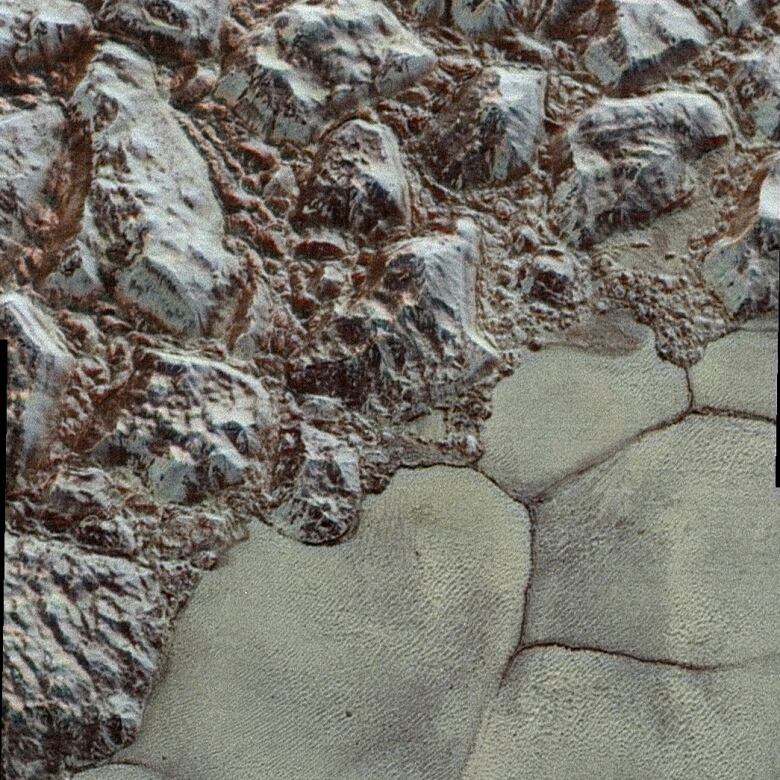How did we miss Planet 9? Bob McDonald
New planet is dim and takes 12,000-20,000 years to orbit sun, so seeing it is like finding needle in haystack

While scientists are excited about the latest evidence of a new planet beyond Pluto, actually seeing it will be more difficult than spotting galaxies at the edge of the universe.
It's a strange irony that telescopes, which are so good at imaging objects at extreme distances, are sometimes hampered finding those that are up close. The new Planet 9, as it is called, is up to 25 times farther away than Pluto, which is very far away by earthly standards, but it is still in our cosmic backyard. Yet finding it will involve a painstaking search by telescopes that could take years.
'Planet 9 has not actually been seen yet. Its presence has been inferred by its gravitational influence on other icy bodies out there in the farthest reaches of our solar system.- Bob McDonald
Planet 9 has not actually been seen yet. Its presence has been inferred by its gravitational influence on other icy bodies out there in the farthest reaches of our solar system.
When objects share a common region of space, they can influence each other, performing a gravitational swing dance that can line them up in a particular order. In this case, several Kuiper Belt objects, related to Pluto, are all on the same plane, which is different from the plane of the rest of the solar system. Imagine two CDs, one lyingflat, the other tipped at an angle. It's that order of these other known objects beyond Pluto that give Planet 9 away.

It's like seeing a disturbance on the surface of water but not knowing what caused it. Perhaps it was a jumping fish, a whale or a seal. Even though you didn't actually see it, you could make an informed guess about the size of the object and its locationby the nature of the ripples in the water.
Nowthat this gravitational effect has been seen, computer models have calculated the mass and orbit of Planet 9, which is huge. The planet takes between 12,000 and 20,000 years to orbit the sun once, and it could lie anywhere along that orbit. So, spotting it in a telescope will mean searching a fairly large region of space, a needle in a haystack process, that will be a modern version of the same technique that led to the discovery of Pluto.
- Planet 9and other space discoveries
- Planet X? 9th planet, beyond Pluto, may exist, new study suggests
- PHOTOS | Pluto's colourful close-ups
You would think that finding a planet would be easy. After all, you just have to look up in the night sky and you'll likely see one, usually shining more brightly than the stars. (This week, five planets will be visible in the early morning skies a rare event). But the planets we see are relatively close to the sun, so they reflect a lot of light, making them bright in our sky.
A photograph of Planet 9 probably already exists in star catalogues;we just haven't recognized it yet.... The planet has been well camouflaged in the foliage of stars.- Bob McDonald
But the realm beyond Pluto is a dark one, where the sun is just a very bright star among all the others. So, Planet 9 will appear dim, resembling an average star, which means it won't be obvious in a photograph. In fact, a photograph of Planet 9 probably already exists in star catalogues;we just haven't recognized it yet. That's why our big telescopes have been looking right past it as they study distant galaxies. The planet has been well camouflaged in the foliage of stars.
The only way to spot something at the outer edges of our solar system is to watch it move. In fact, the word "planet" means "wanderer" in ancient Greek. So, the task facing astronomers is to photograph a region of the sky over several nights, and compare them. The planet will give itself away by shifting its position between the photoswhile all the background stars remain fixed.
This is how Clyde Tombaughdiscovered Pluto, after countless hours of painstaking work, comparing photographic plates by eye. Today, computers analyze photos more efficiently, but it is still a tedious process.

When Planet 9 is finally spotted, we will have yet another unique member of our sun's family to discover. As we have seen again and again, planets are all very different from each other and interesting in their own right. Even Dwarf Planet Pluto turned out to be a surprising world, with towering mountains, glacial plains made of nitrogen ice, and even ice volcanoes.
Who knows what Planet 9 will look like?
It took almost a decade just to reach Pluto;it could take half a century or more to journey to Planet9.- Bob McDonald
It is larger than the Earthbut smaller than Neptune, and ultra-cold. Will it have a blue methane atmosphere with clouds and storms, or a completely frozen face, or, more likely, something we didn't expect?
It's amazing to be alive when we are still discovering planets going around our sun.
We will certainly not be visiting this planet any time soon. It took almost a decade just to reach Pluto;it could take half a century or more to journey to Planet 9 with present technology. But when its alien face finally presents itself in our telescopes, we will be reminded once again how precious our home planet is, snuggled in close to the sun, warm enough for liquid water and life.
New planets are exciting, but there is still no place like home.
(Tune into Quirks & Quarks this Saturdayto hear our interview with Mike Brown,the man who both killed Pluto and has now proposed the existence of Planet 9.)












_(720p).jpg)


 OFFICIAL HD MUSIC VIDEO.jpg)
.jpg)



























































































